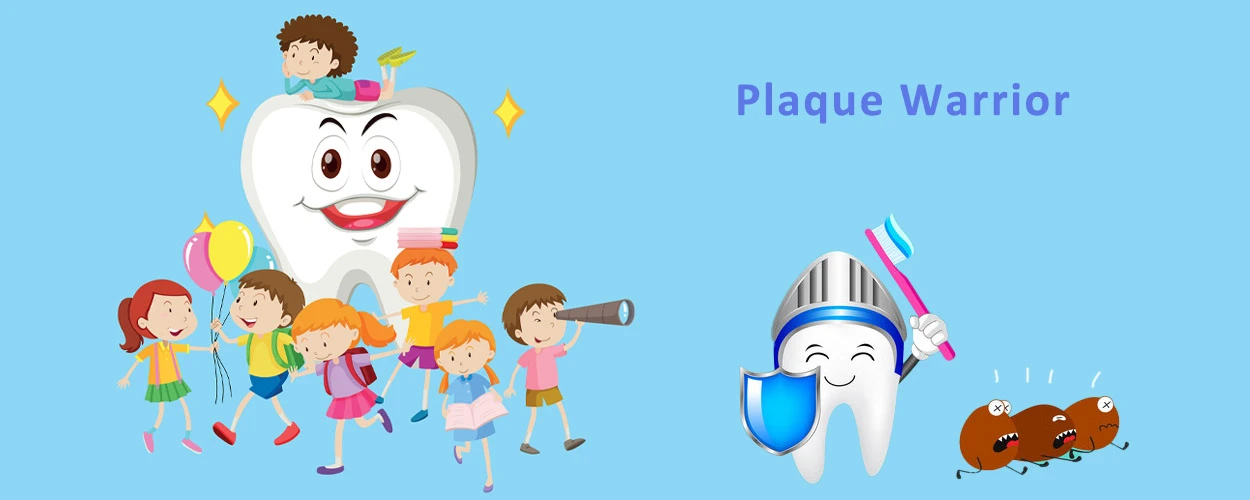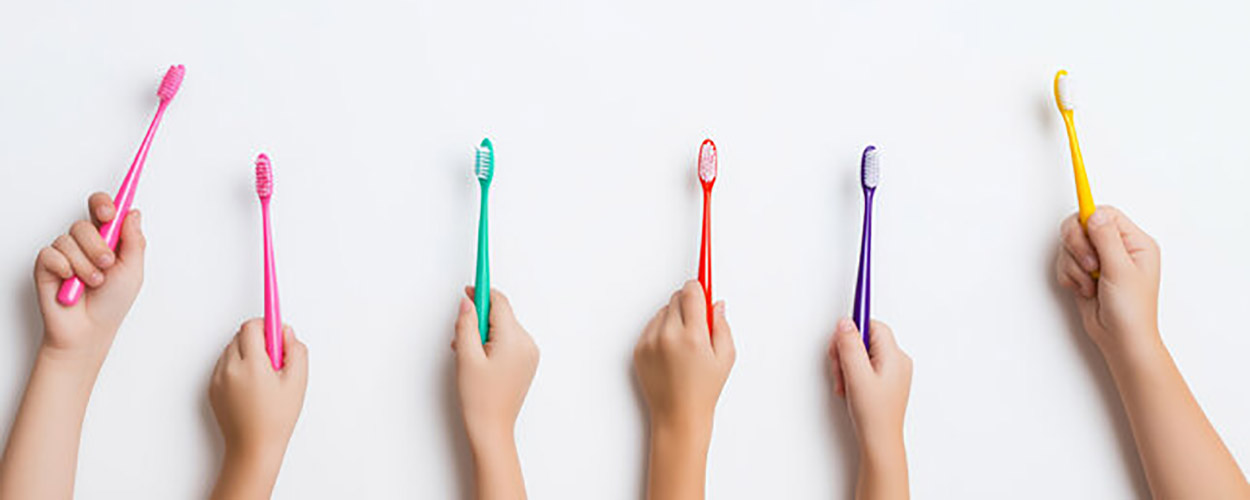Oral health constitutes a critical biological determinant of pediatric systemic development. WHO data indicate 514 million children globally present with untreated caries in primary dentition. Early childhood caries (ECC) represents the most prevalent chronic disease among children under six years. Behind this, it reflects parents’ cognitive misunderstanding and lack of methods in oral education. In this article, a pediatric dentist who has been practicing for more than ten years summarizes the professional and practical training strategies to help parents build an oral health habits system that will benefit their children for a lifetime.
1. Nutritional intervention during pregnancy: Strengthening the innate Foundation of oral health
Tooth germs start to form from the 6th week of the fetal period. The intake of calcium, phosphorus and vitamin D during pregnancy directly affects the development of tooth enamel. It is recommended that pregnant women supplement 1000mg of calcium daily (equivalent to 500ml of milk +50g of cheese) and increase their sources of vitamin D (such as deep-sea fish and egg yolks can be consumed). Clinical studies have confirmed that the vitamin D level of mothers during pregnancy is significantly negatively correlated with the incidence of dental caries in their children at the age of 6 (P<0.05).
2. 0-1 year old: Key guidance for oral tactile sensitivity period
After a baby is born, gum massage is necessary. Use a silicone finger brush to gently clean it in the morning and evening every day. When the baby teeth at 6 months of age come in, it is recommended to use the “three-zone cleaning method” : divide the oral cavity into the left buccal area, the right buccal area and the tongue surface area. Use a 45-degree Angle brush to touch the gum line and gently brush each area for 10 seconds. The focus at this stage is not on removing food residues, but on establishing neural reflex associations.
3. Cross-sensory training: tactile and gustatory joint development
- Tactile: Use silicone aligner chewies of different textures (protrusions/stripes/waves) to stimulate gum development
- Gustatory: Introduce naturally bitter foods (broccoli/kale) after the age of 2 to reduce dependence on sweet foods
- Visual: Observe the distribution of dental plaque using an ultraviolet irradiation instrument
Encourage chewing exploration and plaque awareness through role-playing games like “Plaque Warrior” during brushing. U.S. pediatric behavioral research indicates gamified routines improve compliance by 73%.

4. Tool science: Tools determine the quality of habit formation
Toothbrush evolution: Use silicone material before the age of 1, switch to super soft bristles and cartoon design from 2 to 4 years old, and only use electric toothbrushes after the age of 5.
Toothpaste advanced method : Use fluoride-free gel in the early stage of tooth eruption. After the age of 2, transition to children’s toothpaste containing 500ppm of sodium fluoride (the dosage should be controlled to the size of a grain of rice).

5. Dietary clock: Establishing biological rhythmic protection
Formulate the “322” dietary rules:
- 3-hour interval : there should be at least a 3-hour interval between main meals and snacks to ensure that saliva fully neutralizes the acidic environment
- 2 types of foods to avoid : Sticky foods (gummy candies, preserved fruits) and long-lasting sugary foods (lollipops, sugary drinks) should be eaten sparingly or avoided altogether
- 2 essential items : At the end of each meal, you can have “refreshing foods” such as apple chunks and celery strips, ensuring a daily intake of 200g of high-fiber ingredients
When chewing apples, the fibers rub against the surface of the teeth, which can remove dental plaque and food debris . Experiments show that continuous chewing of apples can reduce dental plaque coverage by 15%-20%. Crude fiber forms a “broom effect” during chewing, cleaning the residues between teeth and on the occlusal surface . The physical friction effect of celery fiber can reduce the risk of interproximal caries. A total of 20 minutes of chewing exercise daily can increase the width of children ‘s dental arches (the Pont index increases by 0.2-0.5) . Dietary fiber adsorbs cariogenic sugars, reducing the time free sugars come into contact with the tooth surface.
6. Positive incentive: Application of reward Mechanism
Create the “Teeth Defense Battle” points table: Brush your teeth in the morning and evening to earn 1 star each, and use dental floss correctly to earn an additional star. Accumulate 10 stars to redeem rewards such as toys and bedtime stories. Neurological research has confirmed that the dopamine reward mechanism can increase the efficiency of habit formation by 40%.

7. Fine management during the transition period: Special attention to during the tooth replacement stage
ⅰ. Treatment of loose teeth during the tooth replacement period
Gently shaking 10 times a day can accelerate osteoclast activity through mechanical stimulation and promote physiological resorption of the tooth root . Experimental data show that regular shaking can shorten the cycle of deciduous tooth loss by 3 to 5 days . Moderate pressure can activate the activity of osteoblasts in the alveolar bone, creating a better bone guidance space for the eruption of permanent teeth.
ⅱ. Permanent tooth eruption period
Use silicone aligner chewies to relieve gum discomfort. The elastic modulus of silicone material (0.5-1.5MPa) can precisely disperse the pressure on the gums and relieve swelling and pain during the eruption period . Thermal imaging detection showed that local blood flow increased by 35% after use. The wavy surface design of the gum can enhance the coordination of the masticatory muscle group and prevent asymmetry in the development of the dental arch caused by unilateral chewing . The hydrophobic property of food-grade silicone can reduce the adhesion of food residues and lower the incidence of gingivitis during the eruption period . Plaque tests show that the interproximal plaque index decreased by 23% after use.
ⅲ. Establish a “Tooth Growth Diary” : Record the time/Angle/color of eruption
8. Fear Elimination: Desensitization to Medical Scenarios
From the age of 3, children are regularly taken to observe their parents’ dental cleaning process, so as to eliminate their fear of the unknown in relation to dental examination and treatment. Clinical practice has proved that children who have more than 6 dental visits in advance have 58% more cooperation with treatment.

9. “Periodic” Checkups: Regular Visits to The Dentist
Once your child’s fear of dental checkups has been eliminated, you can visit the dentist with your child on a regular basis. It is recommended that your child visit the dentist every six months to a year for an oral examination and cleaning. Dentists can promptly detect problems in the child’s mouth, such as dental caries, especially early detection of problems such as anti-mandibular, deep cover, etc. The age of 4-6 years old is the golden period for functional orthodontic treatment.

10. Parents’ Cognitive Upgrading: to Eliminate 5 Major Common Sense Misconceptions
| Primary teeth have to be replaced sooner or later | Decayed primary teeth will lead to abnormal development of permanent tooth germs |
| No fluoride is safer | Moderate amount of fluoride can reduce the risk of dental caries by 25 percent |
| Brushing hard is the only way to get clean | Excessive brushing will lead to an increase in the incidence of wedge-shaped defects |
| Flossing is harmful to gums | Correct use can remove 40% of adjacent plaque |
| Consultation is needed only if you have toothache | Professional fluoride application every 3 months is more effective than treatment |
Conclusion
Modern children’s oral health management has entered the era of “precision prevention”, which requires parents to master the multi-dimensional intervention techniques of bio-psycho-social. Oral health is an important part of general health. Cultivating good oral health habits in children from an early age is not only a way to let children have a mouthful of healthy and beautiful teeth, but also a way to protect their bright smiles for decades to come.


